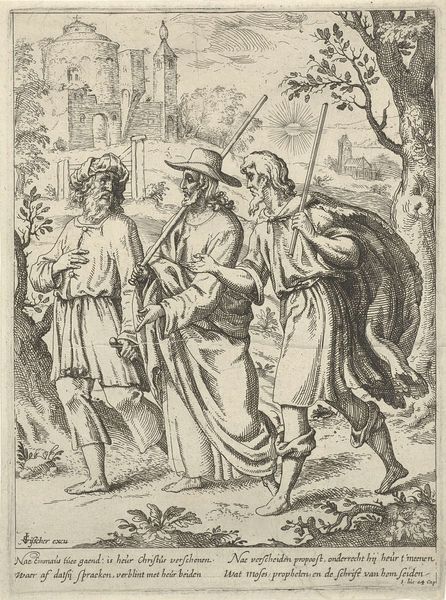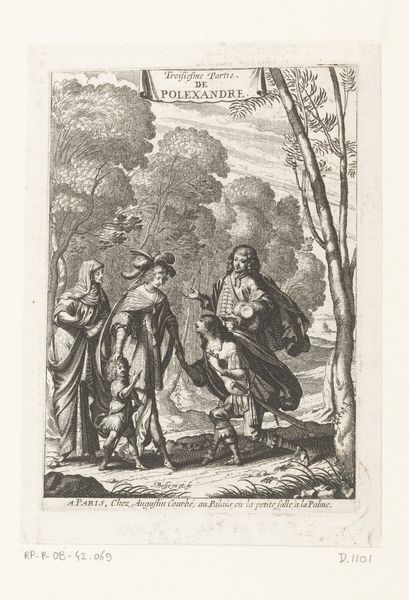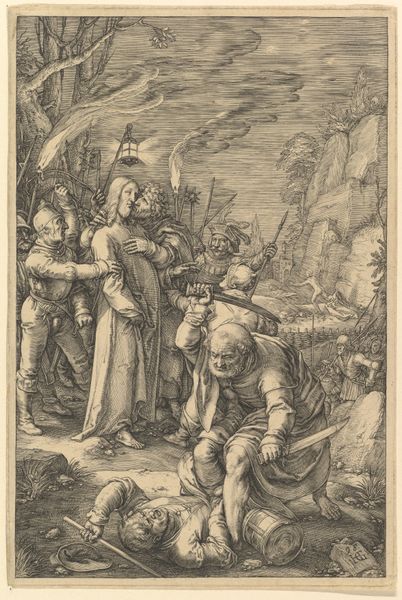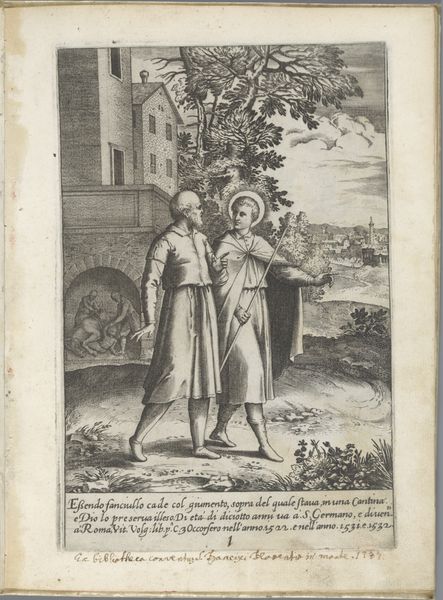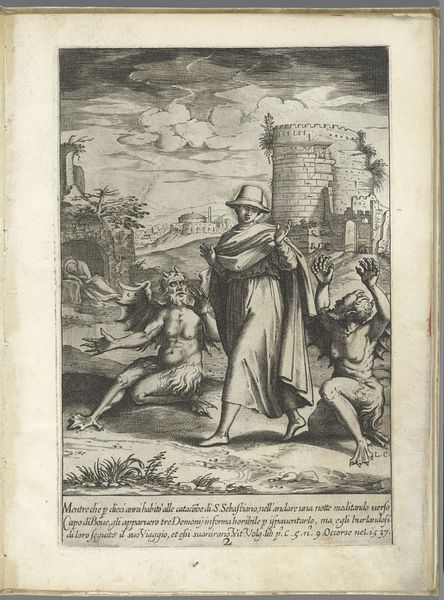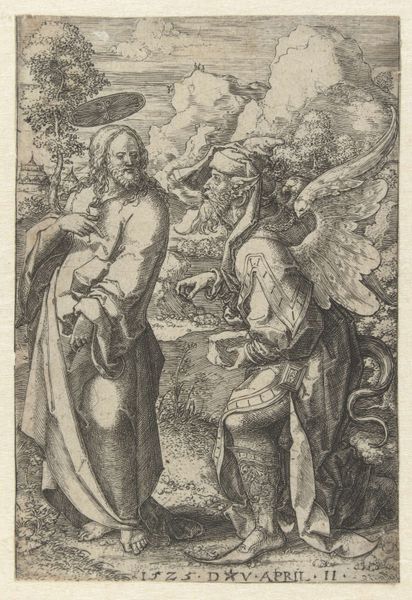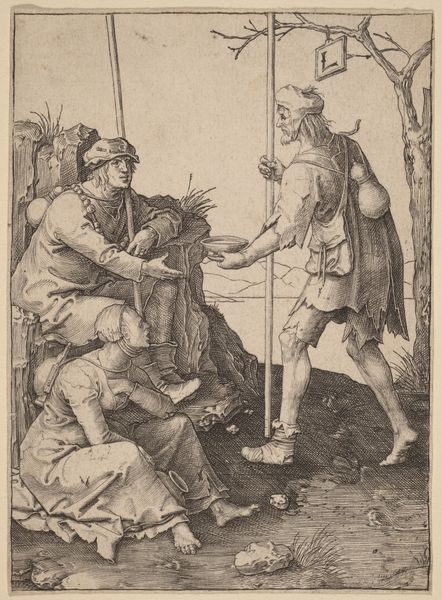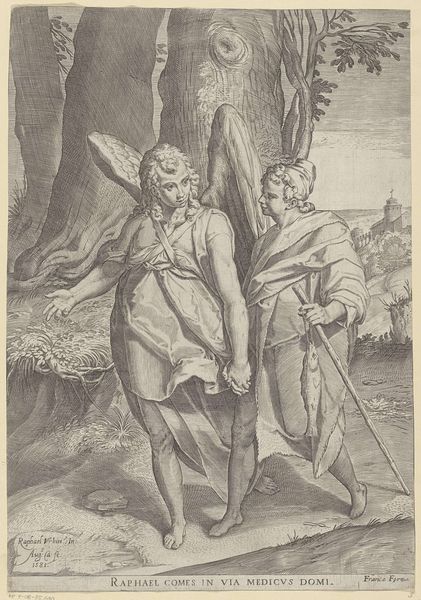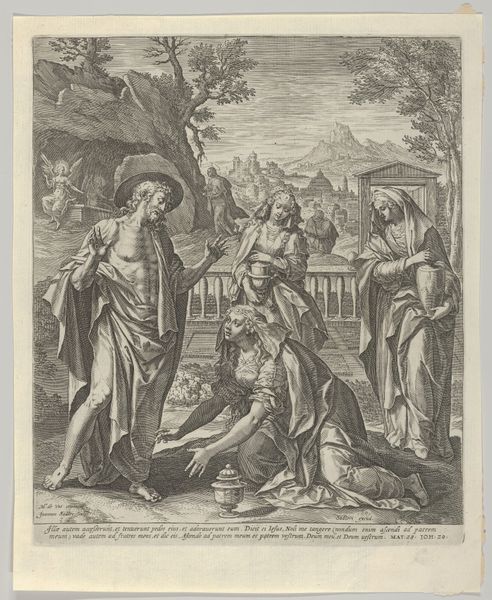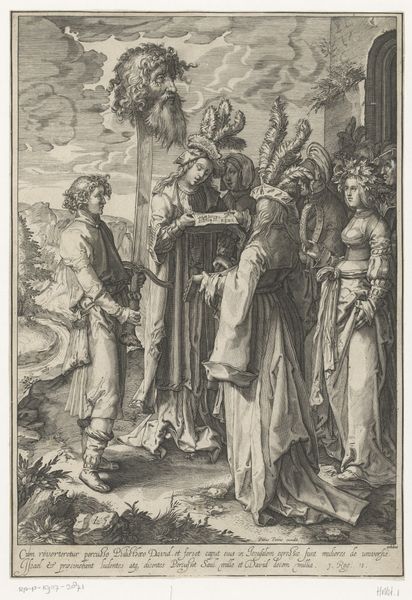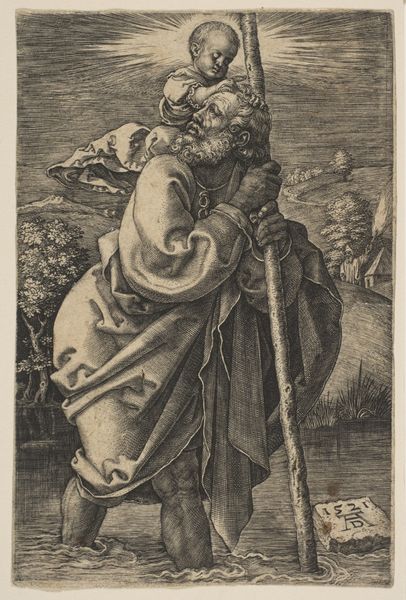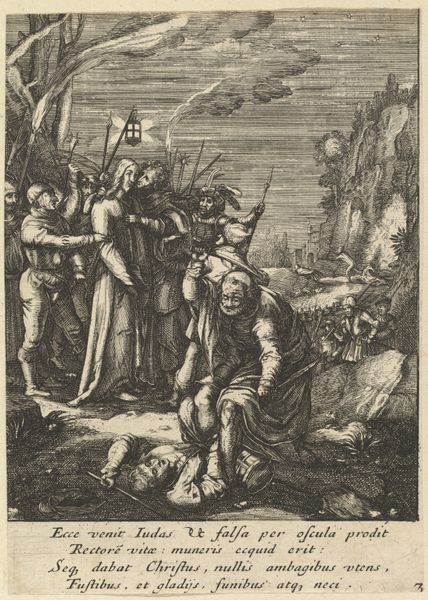
Mediolanensis Viri Feminaeque Ornatus, from Fashions of Different Nations 1580 - 1634
0:00
0:00
drawing, print, engraving
#
portrait
#
drawing
# print
#
pen illustration
#
old engraving style
#
mannerism
#
figuration
#
genre-painting
#
italian-renaissance
#
engraving
Dimensions: sheet: 8 3/4 x 6 in. (22.2 x 15.2 cm)
Copyright: Public Domain
Editor: So, here we have "Mediolanensis Viri Feminaeque Ornatus, from Fashions of Different Nations" by Pieter de Jode I, an engraving dating from sometime between 1580 and 1634. I'm immediately struck by how meticulously detailed the clothing is. It really anchors the figures to a specific social class. What do you make of the image, looking at it through a historical lens? Curator: This print offers us a fascinating glimpse into the socio-cultural dynamics of the late 16th and early 17th centuries. Prints like these, part of larger series depicting the "fashions of different nations," served as visual records and also played a role in shaping perceptions of identity. Notice how the inscription below the image speaks of love and fleeting youth in "Infubria", now Lombardy, a reference to the local culture that likely influenced their status. How does the couple's posture affect your reading of their relationship? Editor: They're not touching, but standing close. I see a formality, perhaps indicative of arranged unions common at the time? It doesn’t strike me as a passionate embrace, that’s for sure! Curator: Precisely. The deliberate separation, despite their proximity, highlights the social constraints governing relationships and public presentation. This was during the Mannerist period and there was huge economic development which changed urban behaviors. Further, how might the image, as a print, influence how fashion trends circulated and were consumed in this period? Editor: I guess it would have democratized fashion to a certain extent, by disseminating imagery of high fashion across wider geographical areas and amongst the rising mercantile classes. It wasn't photography of course, but was it trying to fill a similar role? Curator: Exactly. Prints played a crucial role in standardizing fashion. As they proliferated and moved around cities and towns, people used them as a way to express aspiration or their local pride in urban culture. Think of Instagram today, but as engravings of Italian Renaissance upper-class influencers. Editor: I hadn’t thought of it like that before! It’s really interesting how this image both reflects and shapes its historical context.
Comments
No comments
Be the first to comment and join the conversation on the ultimate creative platform.
